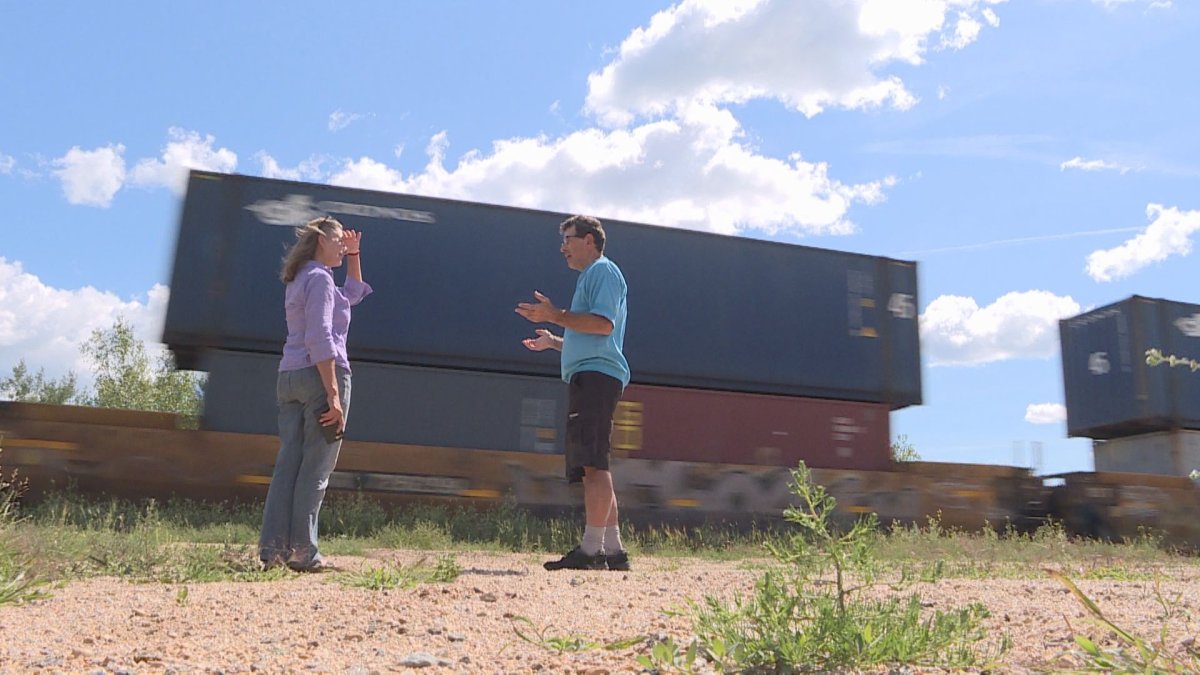A Calgary-based company is looking to create a multi-million-dollar silica sand facility in the Rural Municipality of Springfield, but residents worry it will negatively impact their water.

CanWhite Sands Corp. is planning the $80-million project that would extract and process the resource from a large area in the RM.
Silica sand is used in a variety of products, including glass, batteries and an array of construction products. The company’s chief operating officer says the purest silica sand deposit in North America is potentially sitting 200 feet under the RM of Springfield, near the community of Vivian.
“We’ve experienced 99.9 per cent silica in the deposit here in Vivian, without any other process to it, just clean sand coming out,” CanWhite Sands Corp. chief operating officer Brent Bullen said.
“That puts the deposit here as one purest deposits in North America.”
Bullen says the project will create 50 permanent jobs in the area, and will support about 250 supply positions.
“In that regard, we’re very excited about the potential to have dozens of jobs in Springfield,” RM of Springfield mayor Tiffany Fell said. “Especially further out east, it would be nice to see some economic growth in that part of the municipality.”
But the project is facing fierce opposition from some members in the community, who are voicing concerns over the the facility’s impact on the environment and the Sandilands aquifer that provides water to number nearby communities.
They’re also concerned about dust particles in the air that contain silica, which can cause silicosis, an incurable and deadly lung disease.
“You have at least these three problems: destroying your aquifer, contaminating your aquifer, the silica dust, and this acid mine drainiage and your implication of where it’s going to drain on the Brokenhead River,” project opponent Dennis LeNeveu said.
“These problems are enormous and the amount of water is huge.”
Tanzi Bell has lived in nearby Anola her entire life, she says the project impacts a wider range than just the neighbouring communities.
“To treat it without the respect that it deserves, that’s criminal. This water, the hog producers are on it, cattle producers, agriculture, municipal water supplies are on it, even individual people that are on their individual wells,” Bell Told Global News.
“It extends from Anola to Vivian and just east of Vivian, and heads all the way south to Steinbach, St. Anne is involved in there, Tache, you’ve got all the way to Marchand. This is enormous.”
She also says it will significantly impact real estate in the area.
“This comes forward, all the homes in the area, the properties will be dropping,” she said.
Bell and others opposed to the project are pushing for a hearing from the Manitoba Clean Environment Commission to have the project assessed on a larger scale.
“Water is sacred, it deserves protection,” Bell added. “It doesn’t deserve to be manipulated and money made off of it, it doesn’t deserve mining in it.”
But CanWhite says they’re taking safety standards seriously.
“When you have raw sand on the surface, there’s a concern about it, we heard that,” Bullen said.
“We had safety inspections from mines and minerals, we had more than one, and we did independent testing to ensure the piles of sand we had produced on our test sites were not a health issue to the local residents.”
Bullen says the way the facility operates is also safer because they transport the product while its wet.
“The difference with our facility we actually bring the sand up wet, we transport it wet,” Bullen said.
“The problem is we get confused with conventional pit-type quarry mines, where they actually are scarring the earth, they open it up, its open to atmosphere, there’s trucks driving everywhere there’s dust, we’re not that type of facility. We’re already confused with other projects in Manitoba.”
The company hopes to have the facility fully operational by mid-2021.






Comments